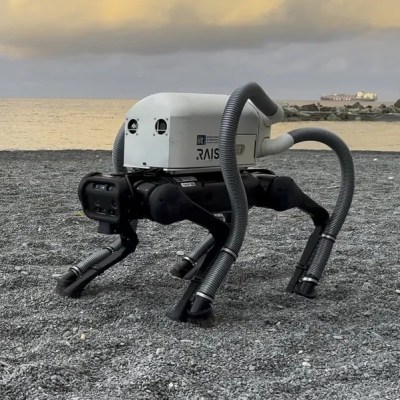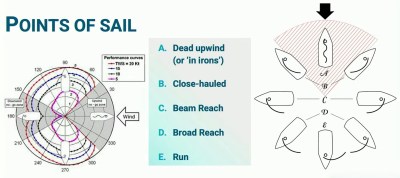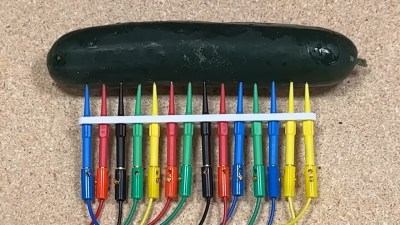It would be better if humans didn’t toss cigarette butts on the ground in the first place, but change always takes longer than we think it should. In the meantime, researchers at the Italian Institute of Technology have used the problem as an opportunity to explore what seems to be a novel approach: attaching vacuum pickups to a robot’s feet, therefore removing the need for separate effectors.
 VERO (Vacuum-cleaner Equipped RObot) is a robotic dog with a vacuum cleaner “backpack” and four hoses, one going down each leg. A vision system detects a cigarette butt, then ensures the robot plants a foot next to it, sucking it up. The research paper has more details, but the video embedded below gives an excellent overview.
VERO (Vacuum-cleaner Equipped RObot) is a robotic dog with a vacuum cleaner “backpack” and four hoses, one going down each leg. A vision system detects a cigarette butt, then ensures the robot plants a foot next to it, sucking it up. The research paper has more details, but the video embedded below gives an excellent overview.
While VERO needs to think carefully about route planning, using the legs as effectors is very efficient. Being a legged robot, VERO can navigate all kinds of real-world environments — including stairs — which is important because cigarette butts know no bounds.
Also, using the legs as effectors means there is no need for the robot to stop and wait while a separate device (like an arm with a vacuum pickup) picks up the trash. By simply planting a foot next to a detected cigarette butt, VERO combines locomotion with pickup.
It’s fascinating to see how the Mini Cheetah design has really become mainstream to the point that these robots are available off-the-shelf, and it’s even cooler to see them put to use. After all, robots tackling trash is a good way to leverage machines that can focus on specific jobs, even if they aren’t super fast at it.
Continue reading “Robot Seeks And Sucks Up Cigarette Butts, With Its Feet”





 the first sails developed by humans were simple drag devices, sailors eventually developed airfoil sails that allow sailing in directions other than downwind. A
the first sails developed by humans were simple drag devices, sailors eventually developed airfoil sails that allow sailing in directions other than downwind. A 













